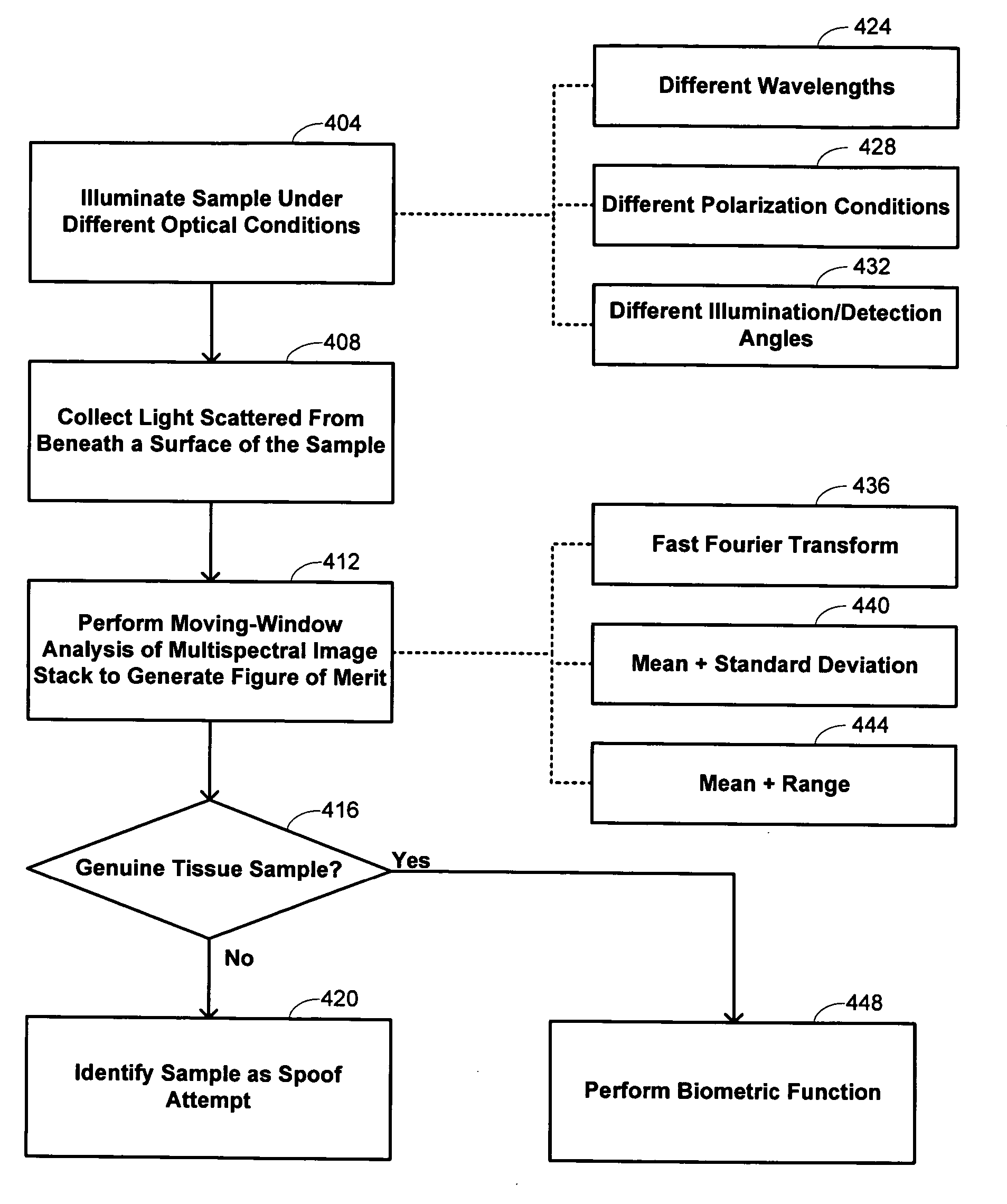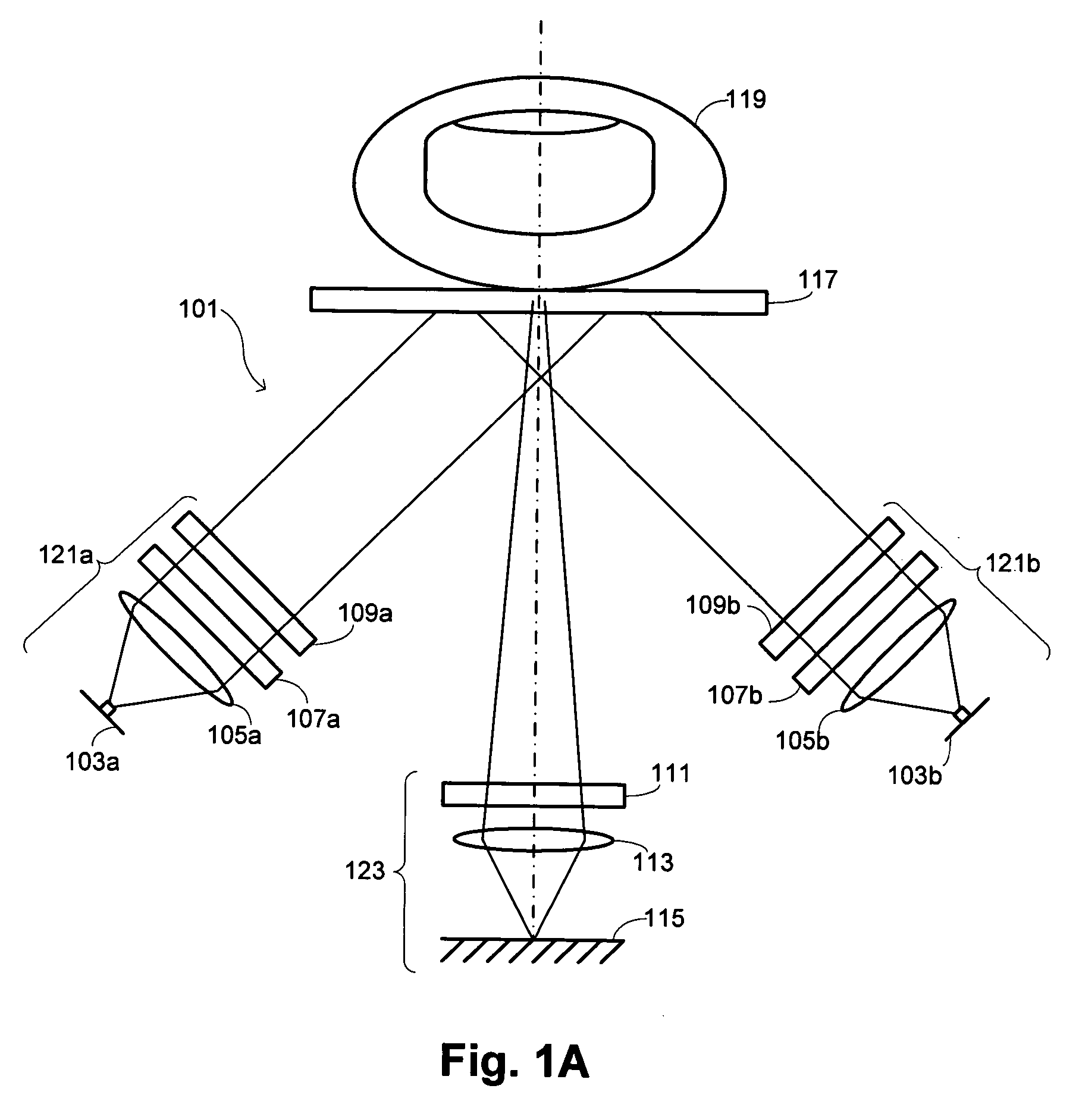Comparative texture analysis of tissue for biometric spoof detection
a tissue texture and biometric technology, applied in the field of biometrics, can solve the problems of poor image contrast, reduced image contrast, and easy to be affected by image quality problems
- Summary
- Abstract
- Description
- Claims
- Application Information
AI Technical Summary
Benefits of technology
Problems solved by technology
Method used
Image
Examples
Embodiment Construction
[0031] Embodiments of the invention provides methods and systems that allow for the collection and processing of biometric measurements, and permit discrimination between real tissue and spoofs. The biometric measurements themselves, once authenticated as derived from real tissue, may provide strong assurance of a person's identity. The biometric measurements are generally collected as “multispectral” data, which refers herein to a set of images collected under a plurality of distinct optical conditions during a single illumination session. The different optical conditions may include differences in polarization conditions, differences in illumination angle, differences in imaging angle, differences in illumination wavelength, and the like. Skin sites applicable to the multispectral measurements described herein include all surfaces and all joints of the fingers and thumbs, the fingernails and nail beds, the palms, the backs of the hands, the wrists and forearms, the face, parts of ...
PUM
 Login to View More
Login to View More Abstract
Description
Claims
Application Information
 Login to View More
Login to View More - R&D
- Intellectual Property
- Life Sciences
- Materials
- Tech Scout
- Unparalleled Data Quality
- Higher Quality Content
- 60% Fewer Hallucinations
Browse by: Latest US Patents, China's latest patents, Technical Efficacy Thesaurus, Application Domain, Technology Topic, Popular Technical Reports.
© 2025 PatSnap. All rights reserved.Legal|Privacy policy|Modern Slavery Act Transparency Statement|Sitemap|About US| Contact US: help@patsnap.com



